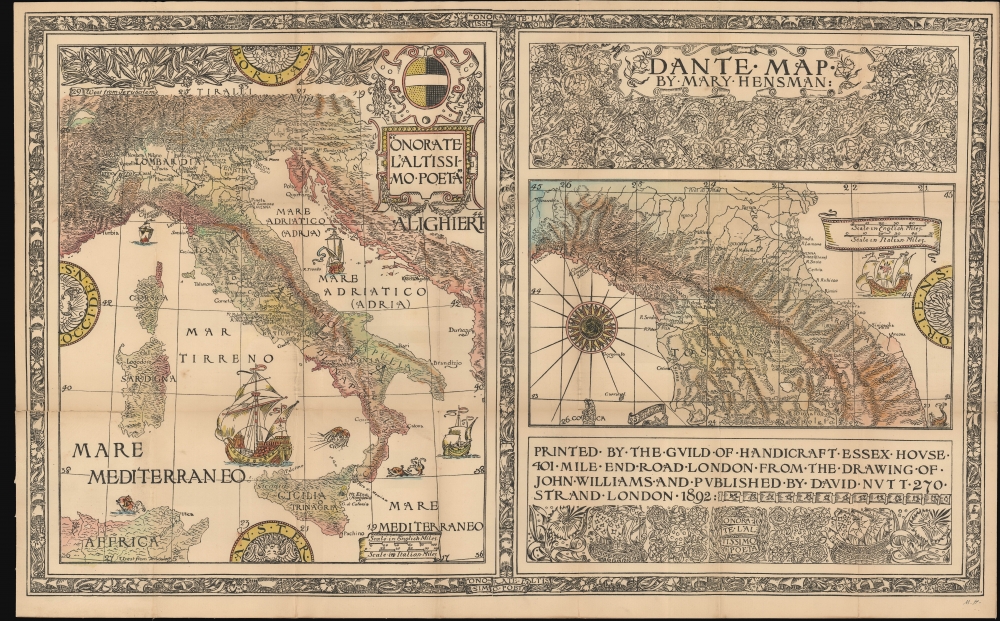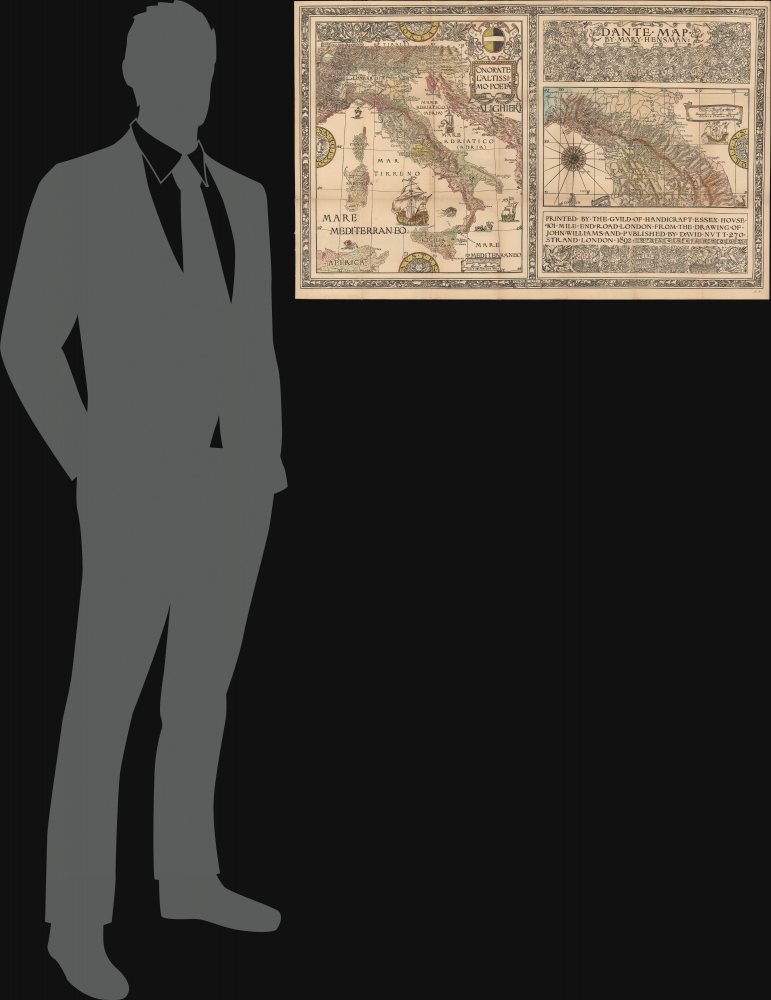This item has been sold, but you can get on the Waitlist to be notified if another example becomes available, or purchase a digital scan.
1892 Mary Hensman Map of Dante's Italy
DantesItaly-hensman-1892$425.00

Title
Dante Map by Mary Hensman.
1892 (dated) 21.5 x 37.5 in (54.61 x 95.25 cm) 1 : 3000000
1892 (dated) 21.5 x 37.5 in (54.61 x 95.25 cm) 1 : 3000000
Description
This is a stunning 1892 arts and crafts style map by Mary Hensman illustrating the life and works of Dante Alighieri. The map was printed by C. R. Ashbee's Essex House Press, what many consider the heir to William Morris's Kelmscott Press. Hensman suggests that Ashbee himself was involved in the map's hand coloring.
The map is accompanied by a 51-page booklet featuring a preface, an index of placenames, along with appropriate references to the poet's writings.
It was advertised in contemporaneous publications with other David Nutt productions as such,
A Closer Look
Two maps on one sheet. The left map details all of Italy, while the smaller map at right focuses on north central Italy, covering from Genoa to the Adriatic, encompassing Liguria, Tuscany, Emilia-Romagna, and Marche. Sites mentioned in the writings of Alighieri are named throughout. In a different typeface are named places where Alighieri visited or lived during his exile from Florence.The map is accompanied by a 51-page booklet featuring a preface, an index of placenames, along with appropriate references to the poet's writings.
It was advertised in contemporaneous publications with other David Nutt productions as such,
A Dante Map, indicating the various countries towns and natural features mentioned in the Poet's works, as interesting in connection with his life. With full Index of Names. Beautifully engraved in antique style by the Guild of Handicraft, and hand coloured. Mounted on canvas and bound in red buckram, with Florentine lily on side.It is not clear how many Nutt printed, but by 1897, stock was sold out.
Dante Alighieri
Dante Alighieri (1265 - 1321) was an Italian poet of the Late Middle Ages whose seminal work, The Divine Comedy, remains a cornerstone of world literature. Born in Florence in 1265, Dante's work is seen as a bridge between the Middle Ages and the Renaissance, reflecting the transition from the medieval world to a more modern consciousness. The Divine Comedy, written in the first person, narrates Dante's journey through the three realms of the dead: Hell, Purgatory, and Paradise. This allegorical vision of the afterlife is a commentary on the politics, philosophy, and theology of Dante's time, as well as a lasting exploration of the themes of justice, redemption, and the human soul's quest for divine union. Dante's use of the vernacular Italian, rather than Latin, made his masterpiece accessible to a wider audience, significantly influencing the course of literary and artistic expression in the Western tradition.Publication History and Census
This map was designed by Mary Hensman, drawn by John Williams, printed at Essex House Press, and published by David Nutt in 1892. Examples are scarce to the market and appear in few institutional collections.Condition
Good. Minor split, lower left, reinforced on verso. Laid on original linen. Mary Hensman's initials in manuscript lower right corner.
References
Cornell University, Fiske Dante Collection, RMC2007_0168.




